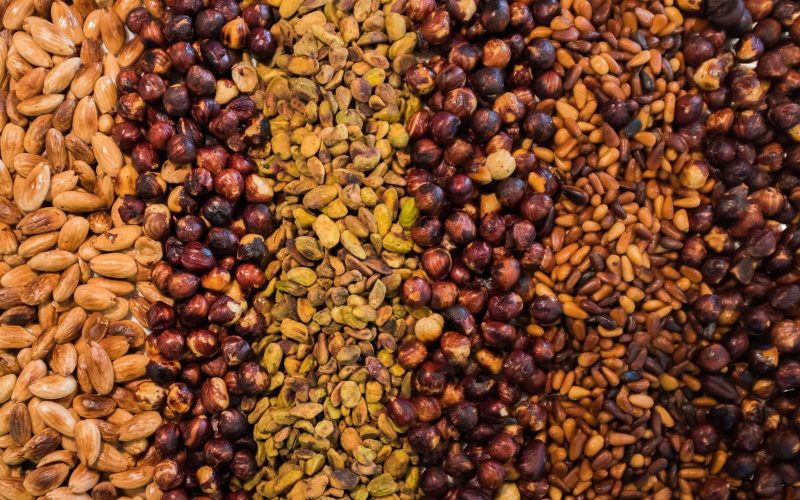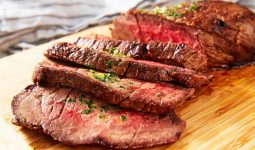There are different types of peanuts, and they differ from each other. This article explains the different types of peanuts and the differences between them.
Peanuts, commonly known as groundnuts, are a popular snack among game enthusiasts at numerous events.
These lovely and crispy nibbles have a cult following that spans the globe. Your favorite nut is a legume that grows underground, not a tree nut.
Buying shelled peanuts and roasting them at home for evening munchies is a standard childhood memory, as is nibbling on boiled peanuts for hours. Peanuts are the best plant-based protein source and other vitamins, fiber, and minerals.
They can be roasted, boiled, chocolate-coated, and prepared in various ways. Although they’re high in calories, they’re beneficial to the human body when consumed in moderation.
Peanuts are oilseeds that are used to produce peanut oil. They contain biotin, manganese, copper, vitamin E, phosphorus, magnesium, and thiamine, among other vitamins and minerals.
There are various health benefits to eating peanuts. Most people undervalue peanuts, like almonds, cashews, and walnuts. However, scientists claim they have the same nutritional content as the more expensive nuts.
However, because of their high levels of unsaturated fats, almonds and walnuts are known to be heart-healthy foods.
Never overlook the low-cost and delicious peanuts, which can help prevent heart disease by decreasing cholesterol levels. These super nuts also prevent tiny blood clots from developing and lower the risk of stroke.
Furthermore, Peanuts are grown in hotter areas. India and China, for example, contribute significantly to global peanut output.
Without boring you, let’s move to the different types of peanuts.
1. Valencia Peanuts

Valencia peanuts have at least three seeds in their pods and occasionally more. Also, Valencia peanuts are a perfect option for boiling as a low-effort treat because of their naturally sweet flavor and proclivity for delivering more seeds to hungry snackers.
Boiled Valencias are one of the very few healthy and excellent delicacies for you, which adds to their appeal.
The strange issue is that, while being nutritious, flavorful, and plentiful, Valencias only account for roughly 1% of total production in the United States, leaving no explanation for this strange deficit.
Valencia oranges are not challenging to grow. Many farmers do well as a result. Valencia oranges, grown primarily in New Mexico and Texas, help farmers fill their pockets.
Furthermore, the Valencia peanut, one of the different types of peanuts, has a thin shell, one of its most distinguishing features. This may cause some inconvenience to the peanut, but it’s a cotton-picking boon to humans.
In addition, Valencia’s thin shells make it easier for the hungry and impatient to get to their tiny bundle of calories, but they also don’t put up much of a fight when boiled in brine to keep the brine out of the pod.
2. Spanish Peanuts
They first developed Spanish peanuts in Spain in the late 1800s, which is a sufficient explanation for why they are known as ‘Spanish’ peanuts.
The Spanish peanut is the tiniest of the peanut varieties, but they are a delicious nut well-suited for roasting. And now that you’ve heard that little tidbit, you’ve undoubtedly recognized that roasted peanuts are, in fact, smaller than regular salted/unsalted peanuts.
Spanish peanuts have a higher oil content per seed than other peanuts. This makes them ideal for roasting, so they are the most commonly used peanuts in producing roasted peanuts.
Spanish peanuts roast beautifully in their oil, imparting a rich nutty flavor to the finished product without extra fats, which would merely mask the roasted snack’s flavor.
With its rust-colored, deep red/brown skin, the rounder Spanish peanut contrasts pleasantly with other peanuts, which are pale crimson and elongated instead.
These peanuts are also a little erratic and susceptible to infections, making them difficult to transport, logistically tough to manage, less appealing to purchasers, and more challenging to locate in stores.
3. Virginia Peanuts
The world’s largest and most sought-after peanuts are said to be Virginia peanuts. This may or may not be accurate, but one thing is sure: Virginians never stop talking about their peanuts.
Nonetheless, despite how much it hurts me to say it, evidence supports this tiresome boasting. The famed ‘ballpark peanuts,’ also known as Virginia peanuts, are the most commonly used nuts in gourmet food. Virginia peanuts account for about 15% of all peanuts produced in the United States today.
To give credit where credit is due, Virginias are known for the relatively big size of their kernels and flavor, and they are pretty darn tasty.
Also, Virginias are the ideal peanut for roasting in the shell because of their giant pods and crunchy deliciousness.
In-the-shell roasting differs from Spanish roasting in one minor but significant way: the latter is better for roasting deshelled.
Furthermore, Virginias can be found in west Texas, South Carolina, north-eastern North Carolina, and Virginia.
The nice thing about these other states is that they aren’t so proud of their equally delicious peanuts. The delectableness begins in May when farmers sow peanut seed plants.
These grow into little green plants that reach a height of around 18 inches. This is one of the different types of peanuts available.
4. Runner Peanuts
All the peanuts we’ve looked at are called ‘bunch peanuts.’ Bunch peanuts are simply peanuts that grow in a clump. Duh. Peanuts are produced at the ends of the branches of many peanut plants, as if in blossom. On the other hand, the runner peanut sprouts peanuts along the entire length of its branches.
Farmers, however, like runner peanuts, one of the different types of peanuts, because they produce more peanuts per plant than bunch peanuts, giving them more bang for their buck. In short, runners account for 80% of all peanuts farmed in the United States.
In addition, Peanut producers planted runners on 1.3 million acres of land in 2020, sustaining the 90 percent of people who utilize peanut butter as an important meal.
Runners appear to be as popular with producers as Oklahoma, Texas, Mississippi, Alabama, Georgia, and Florida consumers.








